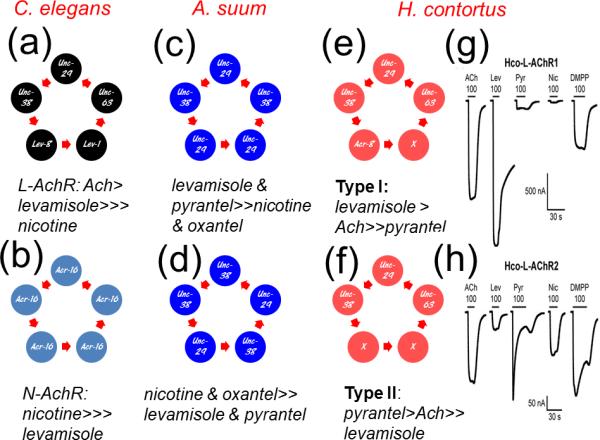Figure 3.

Diagram of possible stoichiometric arrangements of some different AChRs from C. elegans, A. suum and H. contortus and the relative potencies of anthelmintic agonists. (a) The C. elegans levamisole AChR. (b) The C. elegans muscle nicotine AChR. (c) The A. suum AChR where levamisole is more potent than nicotine when more cRNA for UNC-29 than UNC-38 is injected. (d) The A. suum AChR where nicotine is more potent than levamisole when more cRNA for UNC-38 than UNC-29 is injected into the Xenopus oocytes for expression. (e) The H. contortus L-AChR 1 receptor, which is most sensitive to levamisole. (f) The H. contortus L- AChR-2, which is most sensitive to pyrantel [31]. (g) Currents recorded from the Xenopus oocyte expressing H. contortus Hco-L-AChR1 receptor when 100 μM acetylcholine (ACh), 100 μM levamisole (Lev), 100 μM pyrantel (Pyr), 100 μM nicotine (Nic) or 100 μM dimethyphenylpiperazinium (DMPP) are applied. Levamisole is the most potent agonist. (h) Currents recorded from the Xenopus oocyte expressing H. contortus Hco-L-AChR2 receptor when 100 μM acetylcholine (ACh), 100 μM levamisole (Lev), 100 μM pyrantel (Pyr), 100 μM nicotine (Nic) or 100 μM dimethyphenylpiperazinium (DMPP) are applied. Pyrantel produces the biggest peak response.
